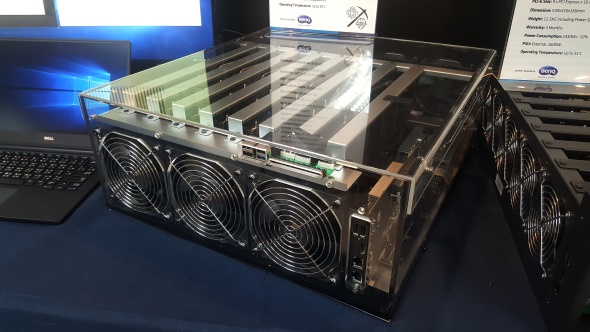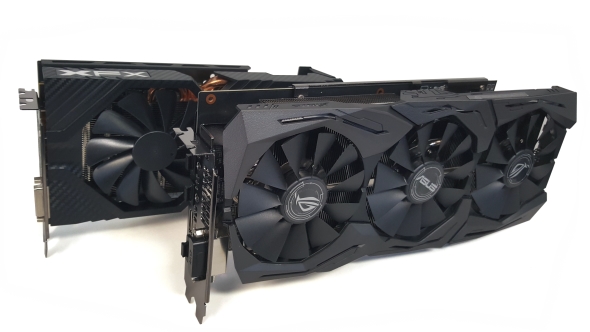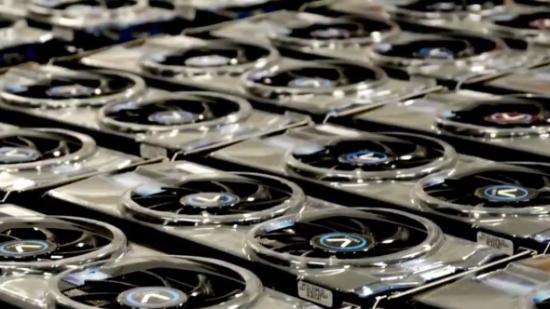The GPU mining days aren’t over, but the gaming graphics card industry isn’t as vulnerable as it was 12 months ago. It was this time last year when I sat down with Sapphire at Computex to talk about the resurgence of cryptocurrency mining and about how a relatively new coin, Ethereum, was stealing away stock of all our AMD-based cards. And one year on, what has changed?
“I think we’re sort of over that bump,” Sapphire’s Adrian Thompson told me at the show. But even though he predicts that GPU mining isn’t going anywhere – Ethereum doesn’t want to give everything over to the ASICs – the company has taken steps to separate out its gaming and compute-focused cards.
If you’re after the best graphics cards to buy right now, you’re coming to the right people.
“We’ve made sure we’ve separated,” says Thompson, “because of the backlash from our gaming community – and we listen to that – we had to separate it out. We can satisfy both demands. There was the point we couldn’t, but the spigots were opened and now we can.”
To that end Sapphire has been working hard to ensure that it is creating the same number of gaming-focused cards as it always was, while now also creating a separate stream of GPUs specifically designed for the miners.
It’s very easy to say that, but another thing to make it a reality, yet Sapphire has made sure to very definitely keep the two streams of its business apart. The main way it is doing this is by creating specific mining machines for the professional compute space. Sapphire had been getting constant enquiries from both big and small mining outfits chasing fresh batches of GPUs, but previously all it had was the standard gaming cards.
It had made a headless card in the past, but the part time miners couldn’t get any value from the resale of a GPU without display connections so it died on the vine long before AMD and Nvidia started making noises about mining specific SKUs.
Now though Sapphire has pre-built rigs designed for serious miners that are created to satisfy purely commercial compute demand.

“We have these two compute systems,” Sapphire’s Philip Wynn-Jones explains. “One is called the MGI 9, that takes nine graphics cards and that’s our entry-level product.”
It’s an off-the-shelf product, sporting a set of standard RX 470 GPUs, using standard parts.
“Then we have this new range,” he continues, “the Inca systems, and our first launch product is the Inca CS-14 and that has seven cards. But each card is dual-GPU, so it’s 14 GPUs. And you can have either 4GB or 8GB configurations in there. And that has got much more innovation in it… it’s got more features.”
This is a rack-mounted server-scale part that is purely of interest to the big commercial miners, and because it’s exclusively built using 400-series GPUs it’s enabling Sapphire to retain all its 500-series cards exclusive for gamers. And before you get excited about the possibility of a dual-GPU RX 470 slipping out of a mining rig and into the hands of gamers, forget about it. CrossFire is on its knees, which makes the dual-GPU card a relic of the past in the gaming space and something Sapphire can’t get behind going forward.
But that all means volume is back in the graphics card market, even for AMD. It’s been more positive on the Nvidia side for a little while, but there are 500-series GPUs which you can buy right now. The only problem is that, while stock has returned, and the mining market has either died back or is restricted to the big mining corps buying up the sort of pro-level systems Sapphire is creating, pricing still hasn’t normalised.

It’s getting close, but it’s still not quite there as we wait for the bruised retailers to accept that stock is here to stay, they’re margins can remain intact, and they can start to ease back on the pricing of single GPUs.
And on that front we spoke to AMD’s Scott Herkelman about the mining market after the company’s big Computex press conference this week.
“We see a softening, but I think that’s a good thing,” he explains. “People were just so mad over the last year, and I’m with them. Having a 580, I think some silly prices were all the way up at $699, and I think on behalf of all gamers worldwide that…sucks. I was about ready to say something else…
“For the most part we don’t see the craziness that we once saw, and we’re so excited about it. It’s not perfect yet, but more normal than it’s been in almost a year.”
And AMD is confident that pricing is going to start properly normalising for its graphics cards in the coming months, and that can only be good for gamers. Partly because it means we can buy Radeon cards again, but mostly because it means Nvidia is going to have to release something new to make sure everybody keeps buying GeForce GPUs when AMD cards become a more compelling prospect again.
